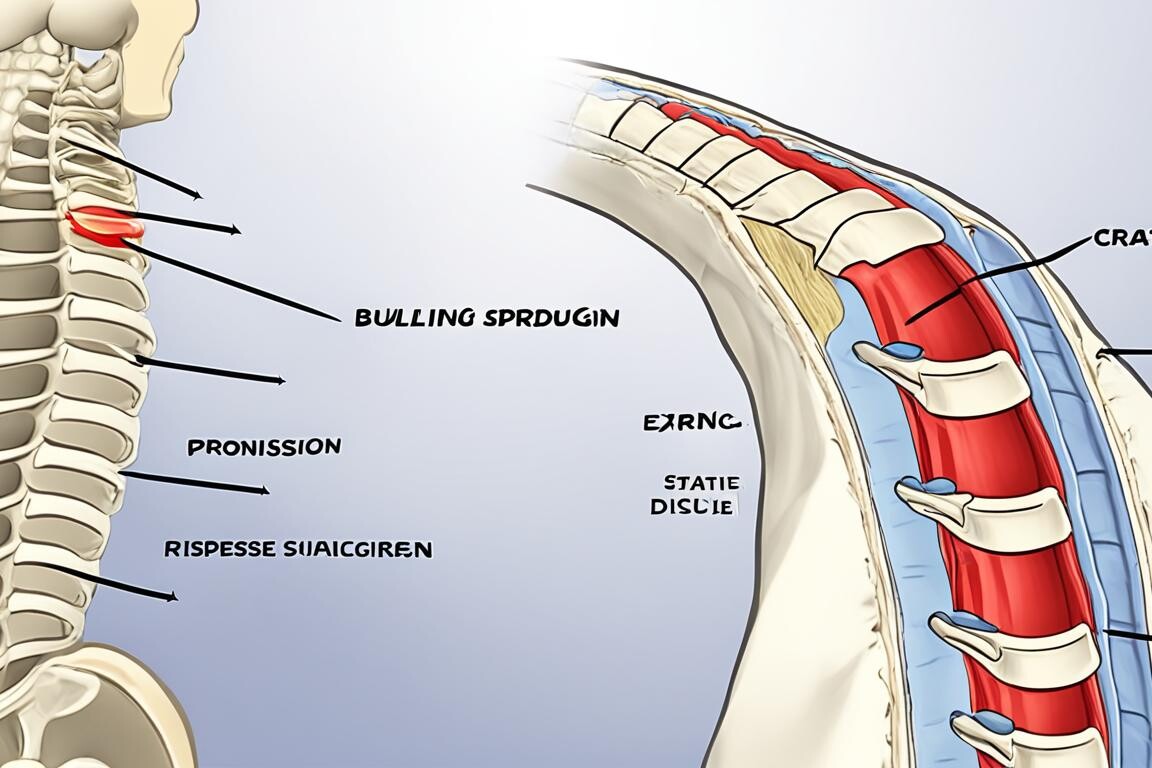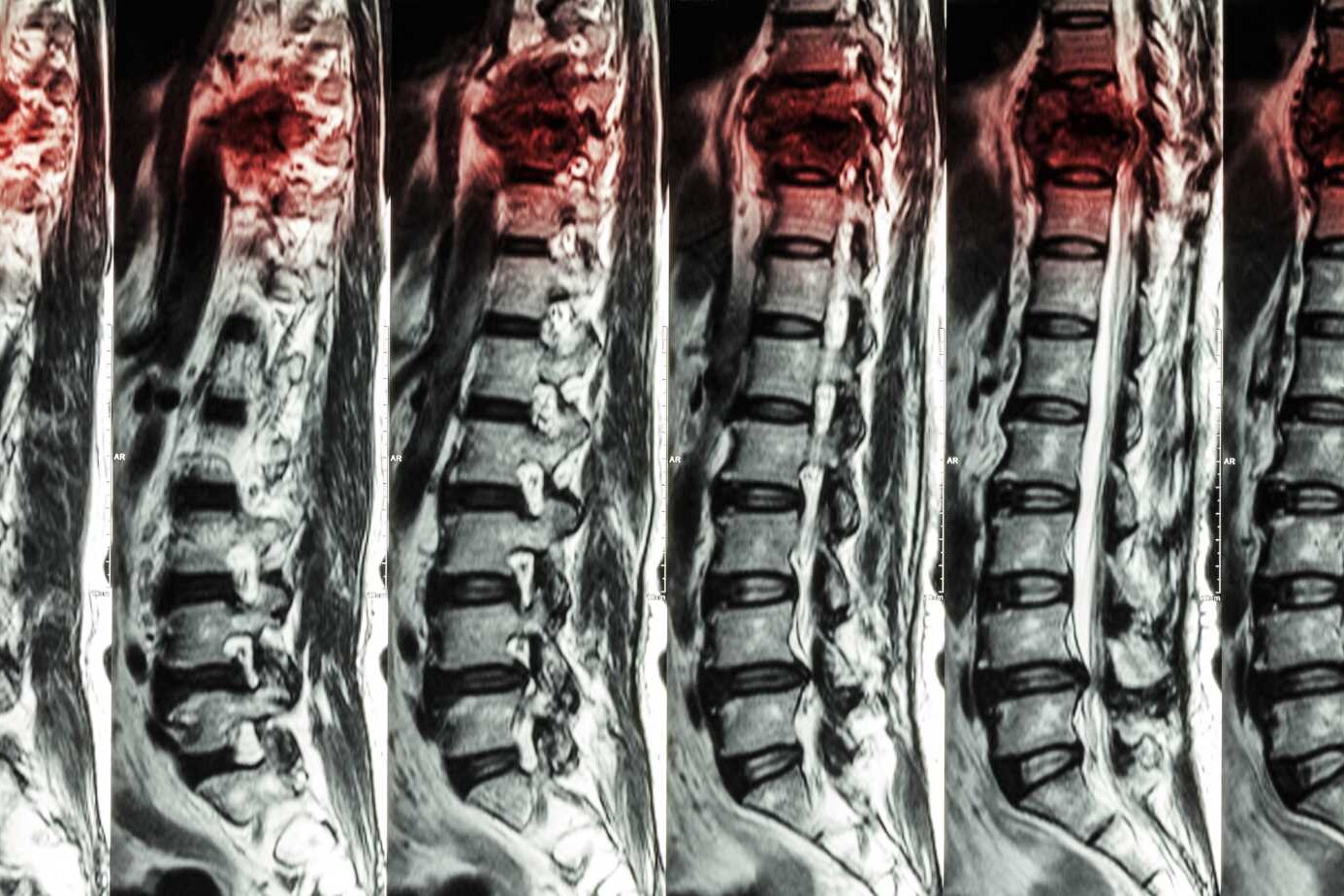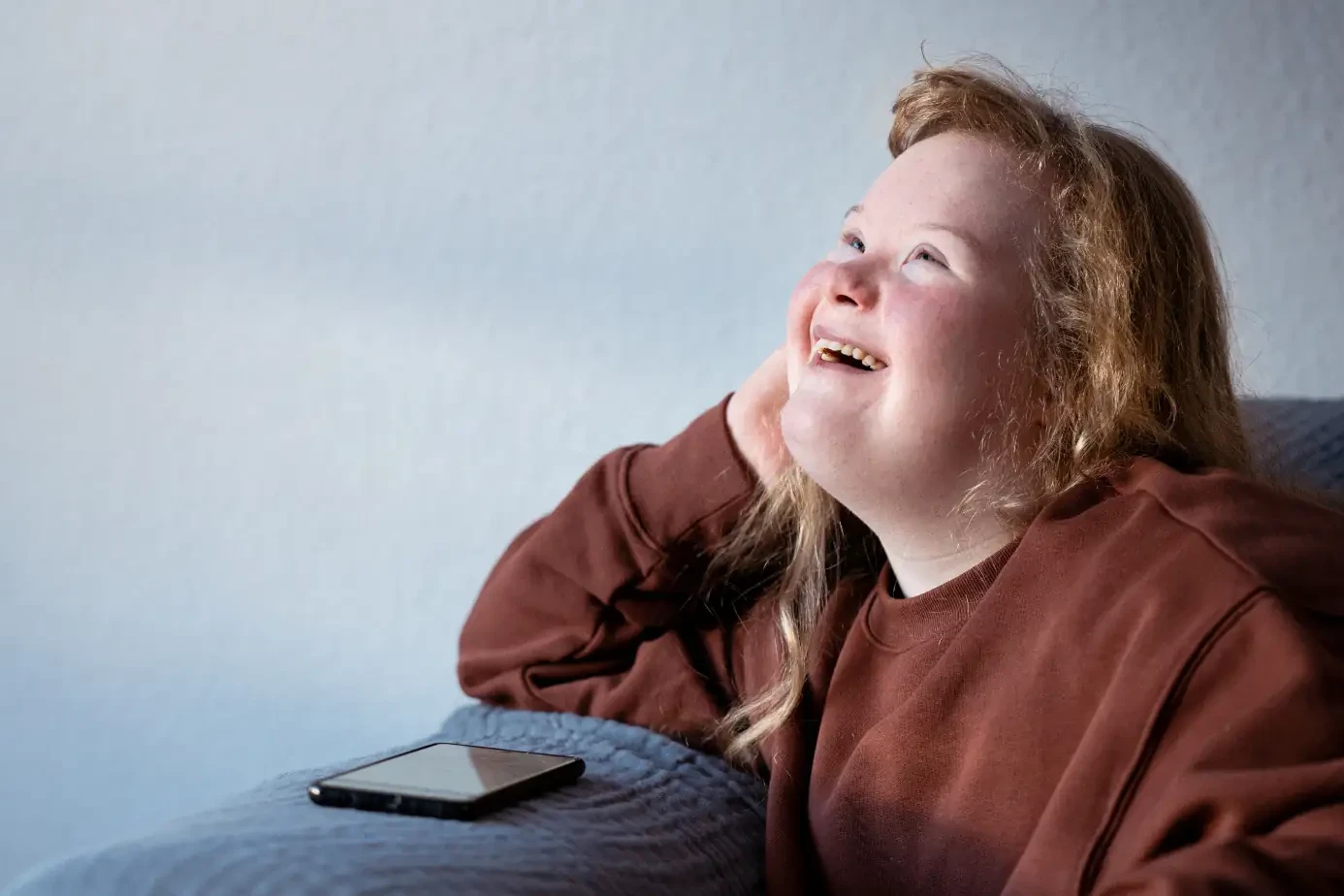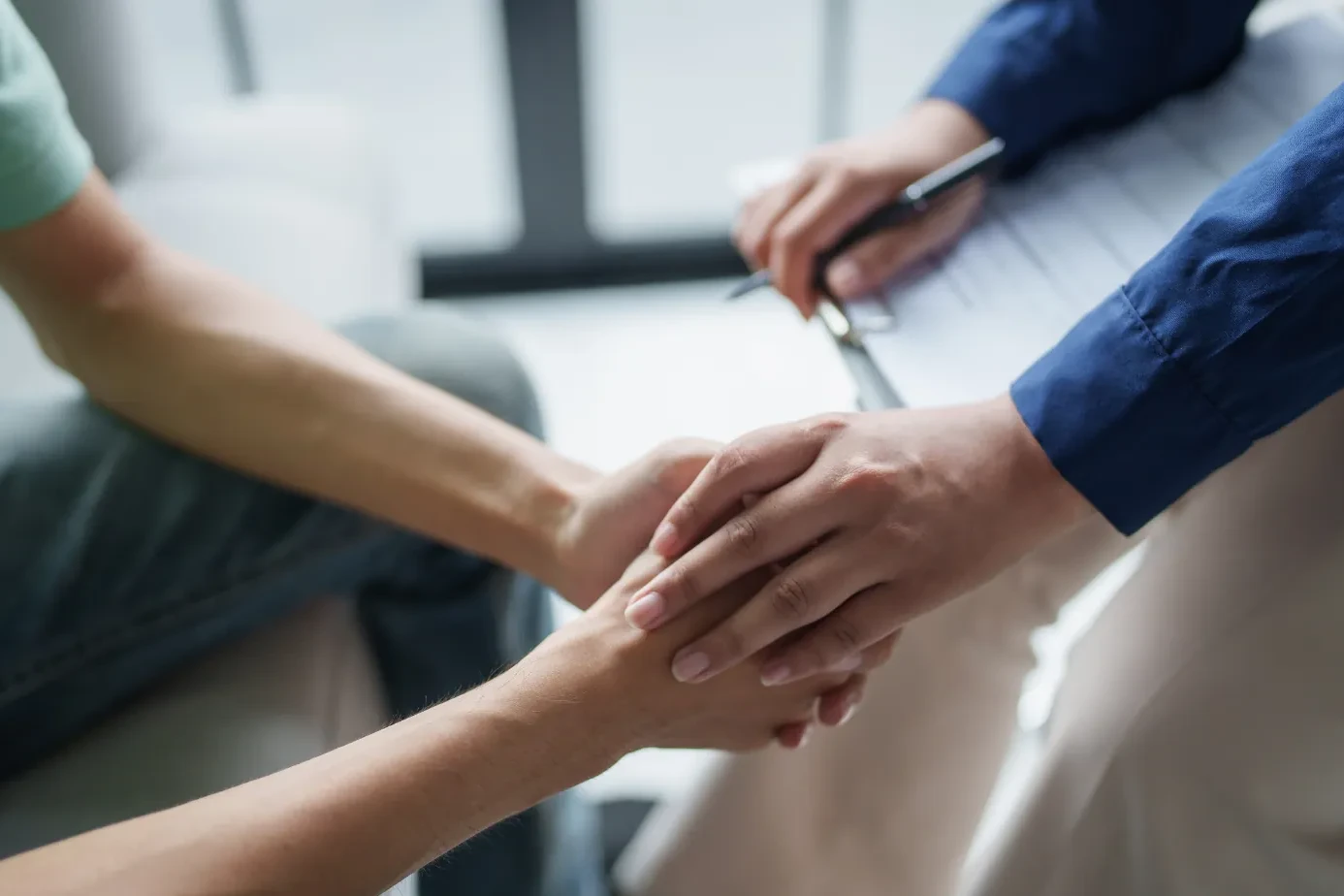If you’re one of the 2% of adults in the U.S. with a herniated disc, you know the pain is real and tough. But, there are many ways to ease the pain without surgery. We’ll look at the best non-surgical treatments, alternative therapies, lifestyle changes, and surgery options to help you feel better.
Table of Contents
ToggleUnderstanding Herniated Discs
What is a Herniated Disc?
A herniated disc, also known as a slipped or ruptured disc, happens when the soft center of a spinal disc moves through a tear in its outer layer. This can put pressure on nearby nerves. It leads to pain, numbness, and weakness.
Symptoms and Causes
Symptoms include back pain, leg pain (sciatica), and tingling or weakness in the extremities. Herniated discs are often caused by age, injury, or repeated stress on the spine. Being overweight and smoking can also increase the risk.
Up to 2% of adults in the U.S. get herniated discs each year, affecting almost 7 million people. About 70% to 80% of people will have lower back pain at some point. But most don’t need surgery for a herniated disc.
Most people with a herniated disc don’t have symptoms. For those who do, treatments like rest, pain relievers, and physical therapy are often first. But sometimes, more treatments like medications, injections, or surgery are needed for bulging disc treatment.
Non-Surgical Treatments
If you’re facing the pain of a herniated disc, there are many non-surgical ways to help. Physical therapy is a big part, focusing on exercises to make your muscles stronger and more flexible. Your therapist might use deep tissue massage, traction therapy, and TENS to lessen pain and swelling.
Physical Therapy Exercises
A tailored physical therapy plan can really help with herniated disc pain. Your therapist will create a workout plan just for you, focusing on the weak spots. This strengthens your core and stabilizes your spine, easing pressure on the disc and aiding healing.
Hot and Cold Therapy
Using hot and cold therapy can ease herniated disc pain by shrinking swelling and boosting blood flow. Your therapist might suggest a heating pad, ice packs, or contrast baths. Adding these therapies to your daily routine can be a simple yet powerful way to reduce pain.
By trying these non-surgical treatments, you can find the best mix of therapies to ease herniated disc pain. This will help you get back to your normal activities.

Alternative Therapies
Traditional medicine isn’t the only way to deal with herniated disc pain. Options like acupuncture and chiropractic care can also help. These methods offer special benefits for those looking for a more natural way to handle their disc problems.
Acupuncture for Pain Relief
Acupuncture is an old practice from traditional Chinese medicine. It aims to boost the body’s healing and release endorphins, which naturally ease pain. By focusing on certain points on the spine, acupuncture might ease herniated disc pain.
Chiropractic Care
Chiropractic care is another option for herniated discs. Chiropractors use special techniques to fix the spine and ease pressure on the disc and nerves. This method doesn’t involve surgery and can help with pain and support other treatments.
Acupuncture and chiropractic care can be key parts of a full treatment plan for herniated discs. They work to fix the root causes and help the body heal naturally. This can lead to better pain management and a better life overall.
Medications for Herniated Disc Pain Relief
If you’re dealing with a herniated disc, medications can help manage the pain. Over-the-counter options like acetaminophen, ibuprofen, and naproxen can reduce inflammation and ease pain. These are often the first choice for treating herniated disc pain.
For severe cases, you might need prescription drugs. Anticonvulsants, antidepressants, muscle relaxants, and opioids can be used, but with care. They have side effects and risks of addiction. Corticosteroids, taken by mouth or injection, can also lessen swelling and inflammation around the affected nerve.
- Non-steroidal anti-inflammatory drugs (NSAIDs) like ibuprofen and naproxen can effectively manage pain and reduce inflammation associated with herniated discs.
- Prescription-strength NSAIDs may be needed if over-the-counter options don’t help enough.
- Muscle relaxants can help ease muscle spasms that come with a herniated disc.
- Oral corticosteroids may be prescribed for short-term use to reduce swelling and inflammation around the affected nerve.
- Opioid painkillers, such as hydrocodone or oxycodone, are used with caution due to the risk of addiction and other side effects.
- Antidepressants can help block pain signals and make natural painkillers work better, providing relief for herniated disc pain.
- Epidural steroid injections are a strong anti-inflammatory option that can offer quick pain relief for compressed nerves in herniated discs.
It’s key to work closely with your healthcare provider to find the right medication for your condition. Be aware of possible side effects and interactions. Managing herniated disc pain often involves a mix of medications, physical therapy, and lifestyle changes.
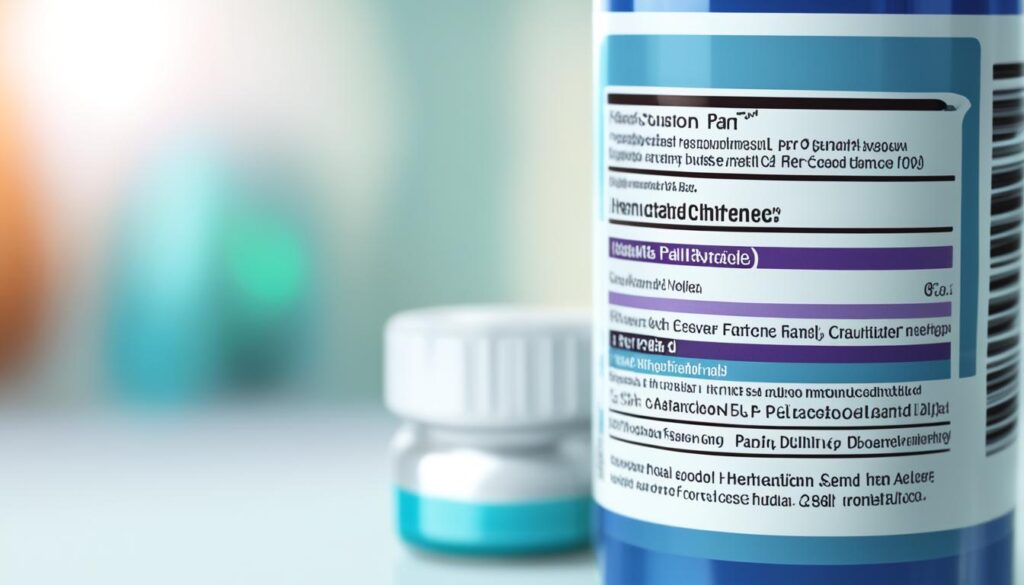
Injections and Nerve Blocks
Minimally invasive injections and nerve blocks can help with the pain from a herniated disc. They work by stopping pain signals and reducing inflammation around the nerves. This can bring relief to those in pain.
Selective Nerve Root Blocks
Selective nerve root blocks (SNRBs) are a good choice for dealing with herniated disc pain. A mix of steroid and anesthetic is injected near the nerve root affected by the disc. This stops pain signals from reaching the brain, offering relief that can last weeks or even months.
Epidural Steroid Injections
Epidural steroid injections (ESIs) put anti-inflammatory medicine right next to the spinal cord. This can lessen swelling and inflammation that irritates nerves and causes pain from a herniated disc. Studies show ESIs can help relieve pain from disc herniation in 75-88% of cases.
SNRBs and ESIs are minimally invasive and can greatly help those with herniated disc pain. They target the pain source, allowing for relief. This makes it easier for patients to start physical therapy to fix the underlying issue.
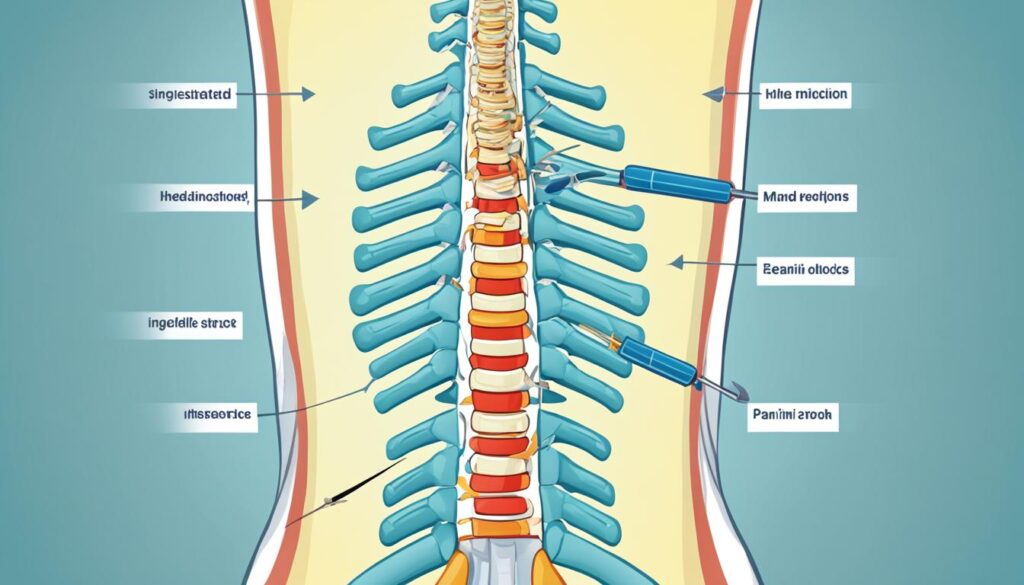
Lifestyle Modifications
Managing a herniated disc is not just about medical treatments. Your lifestyle choices are key to relief and preventing more problems. Focus on weight management and proper posture and ergonomics.
Weight Management
Carrying extra weight can strain your spine and make herniated disc pain worse. A balanced diet and regular exercise can ease the pressure on your discs and aid healing. Losing 5-10% of your weight can really help your symptoms.
Proper Posture and Ergonomics
Good posture and ergonomics are crucial for easing herniated disc pain. Don’t slouch or sit for too long, as it can make things worse. Use furniture and tools that support your spine and keep you aligned. Remember to stretch and move regularly to stop your discs from getting worse.
By changing your lifestyle, you can support your medical treatment and take charge of your herniated disc pain. These changes can help you feel better and prevent future problems.

Surgical Options
If non-surgical treatments don’t help, your doctor might suggest surgery. Herniated disc surgery is usually considered when other treatments like physical therapy and medicines don’t work well. This is to help manage your severe symptoms.
A common surgery for a herniated disc is a microdiscectomy. This surgery is done with a small incision. It removes a part of the disc to ease pressure on the nerve. This method often leads to quicker healing than traditional surgery.
Spinal fusion is another surgery option. It connects two or more vertebrae together to make the spine more stable. This is usually done if the herniated disc causes a lot of nerve compression or instability. While it can help relieve pain, it might also reduce the spine’s flexibility.
Some doctors might suggest artificial disc replacement (ADR) surgery. This surgery removes the damaged disc and puts in an artificial one. It aims to keep the spine flexible and allow more movement after surgery.
Choosing the right surgery depends on many factors, like your age, health, and how bad your symptoms are. Getting a second opinion can also help make sure you get the best treatment for you.
After surgery, physical therapy is key for a good recovery. It helps manage your herniated disc in the long run.
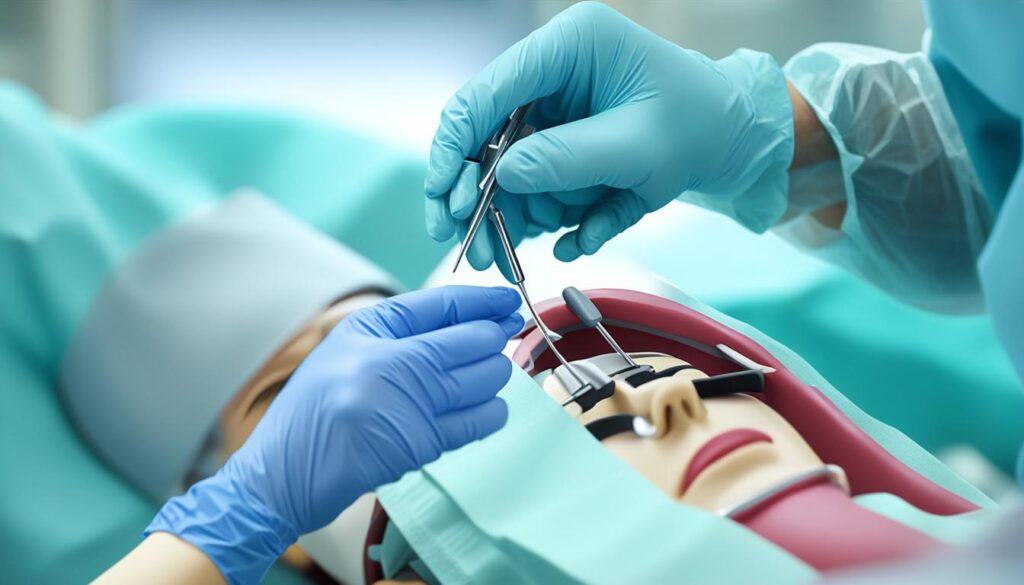
herniated disc pain relief
If you’re dealing with the pain of a herniated disc, there are natural ways to ease it. Using home remedies and changing your lifestyle can help a lot. While medicines and professional help are good, these other methods can also make a big difference.
Walking or swimming are great ways to relieve herniated disc pain. These activities boost blood flow, lessen inflammation, and strengthen your spine muscles. Using hot and cold packs on the sore spot can also help. They ease the pain and shrink swelling.
Good posture and ergonomic furniture can ease herniated disc symptoms. Meditation or deep breathing can also help by easing pain and cutting down stress. Stress can make disc problems worse.
For home care, over-the-counter pain relievers like ibuprofen or acetaminophen can help. They lessen inflammation and ease the pain from a herniated disc.
Looking into natural treatments for ruptured discs? Think about adding turmeric, glucosamine, or chondroitin to your diet. These substances have anti-inflammatory effects and might aid in healing.

Always talk to your doctor before trying new treatments or changing your lifestyle. By using a mix of natural methods, you can better manage the pain and work towards healing from a herniated disc.
Prevention and Self-Care
Keeping your spine healthy is key to avoiding herniated discs and managing pain. By making smart lifestyle choices, you can lower your risk and take charge of your disc health.
Exercises for a Healthy Spine
Exercise is vital for a healthy spine. Doing core-strengthening exercises can boost flexibility, stability, and support for your back. Here are some exercises to help prevent herniated discs and strengthen your back:
- Planks and other core-building exercises to enhance spinal stability
- Stretches and yoga poses to improve flexibility and range of motion
- Low-impact aerobic exercises, such as walking or swimming, to keep your heart healthy
- Strength training focused on the back and abdominal muscles for better support
Adding these exercises to your daily routine can help protect your spine and lower the risk of disc problems.
Regular exercise is just part of the story. Good posture, proper lifting techniques, and a healthy weight are also key for your disc health. By focusing on your spine’s health, you can prevent herniated discs and manage any pain.
When to Seek Medical Help
If you have spinal disc problems, it’s key to see a doctor if you feel ongoing or severe back or neck pain. Also, if you have pain in your legs or arms, numbness, tingling, or muscle weakness. These signs mean you might need to see a doctor for a herniated disc or other disc issues.
Your doctor will do a full check-up and might order tests like X-rays, CT scans, or MRI. They will then suggest the best treatment, which could be non-surgical or surgery. This is to fix the issue and ease your disc-related symptoms.
Don’t ignore signs of a serious spinal issue. Getting medical help quickly can stop more harm and lead to better treatment and recovery. Remember, your health and well-being are most important. So, see a doctor if you notice any of these:
- Persistent or getting worse back or neck pain
- Radiating pain, numbness, or tingling in the arms or legs
- Muscle weakness or loss of sensation in the limbs
- Difficulty with bowel or bladder control
- Severe pain that disrupts your sleep or daily activities
Dealing with spinal disc problems early can help you manage your symptoms. It can also prevent further issues and boost your life quality. Don’t wait – take action and talk to a healthcare professional if you’re worried about your spinal health.
Integrative Approach
Managing herniated disc pain often means using a mix of treatments. This includes physical therapy, medication, and alternative treatments. Adding lifestyle changes helps too. It supports your body’s healing.
Working with your healthcare team to create a personalized plan is key. This way, you can tackle the root causes and symptoms of your herniated disc.
A Holistic Path to Ruptured Disc Relief
Combining therapies is the core of an integrative approach. It targets the herniated disc from different angles. This might include:
- Physical therapy exercises to improve flexibility, strength, and range of motion
- Hot and cold therapy to reduce inflammation and alleviate pain
- Acupuncture to stimulate the body’s natural pain-relieving mechanisms
- Chiropractic adjustments to realign the spine and promote healing
- Medications to manage pain and inflammation
- Lifestyle modifications, such as weight management and proper posture
By using these treatments together, you can tackle the underlying causes and ease symptoms. This approach helps your body heal naturally. It can lead to lasting improvements in your spinal health.
Every person’s experience with a herniated disc is different. It’s important to work with your healthcare team. They can create a plan that fits your needs best.
Coping with Chronic Pain
Living with chronic herniated disc pain is tough, both in body and mind. But, there are ways to manage it and better your life. Understanding emotional support and a whole approach helps you take charge of your condition. This way, you can handle the chronic pain better.
Handling chronic herniated disc pain means looking at it from many angles. First, talk openly with your healthcare team. They can help create a plan just for you. This plan might include physical therapy, managing meds, or trying new therapies.
Don’t forget the importance of emotional support. Being part of a support group or finding others like you can really help. These groups offer a sense of belonging and useful advice on dealing with your condition’s emotional side.
Also, doing things you love can help a lot. It could be a hobby, exercise, or just being outdoors. These activities boost your mood and help you cope with your pain.
Remember, getting over chronic herniated disc pain takes time and patience. Be kind to yourself as you try different things. With a holistic approach, you’ll find the support and strategies you need to face this challenge. This will improve your overall well-being.
Conclusion
Herniated discs can cause a lot of pain and discomfort. But, there are many ways to help manage this condition. You can try non-surgical therapies like physical therapy and medication. Or, you can look into alternative approaches and minimally invasive procedures.
Working with your healthcare team and making lifestyle changes can help. By taking an integrative approach, you can find relief and manage your herniated disc better. Remember, most people with herniated disc symptoms get better on their own, but it might take up to 12 weeks.
When dealing with disc issues, it’s important to know the causes and look at both surgery and non-surgery options. Create a plan that fits your needs. With the right strategies and a focus on your health, you can beat the challenges of a herniated disc and improve your life.
FAQ
What is a herniated disc?
A herniated disc, also known as a slipped or ruptured disc, happens when the soft center of a spinal disc pushes through a tear in the outer layer. This can put pressure on nearby nerves, causing pain, numbness, and weakness.
What are the symptoms of a herniated disc?
Symptoms of a herniated disc include back pain, pain in the legs (sciatica), and numbness or weakness in the arms and legs.
What are some non-surgical treatments for herniated discs?
Non-surgical treatments include physical therapy, using hot and cold therapy, and alternative therapies like acupuncture and chiropractic care. Over-the-counter pain relievers and anti-inflammatory drugs are also used.
How can alternative therapies help with herniated disc pain?
Alternative therapies like acupuncture and chiropractic care can help with pain relief. Acupuncture stimulates healing and releases endorphins. Chiropractors can align the spine to reduce pressure on the affected disc and nerves.
What role do medications play in herniated disc pain management?
Medications help relieve pain and reduce inflammation. Over-the-counter options like acetaminophen and ibuprofen work well. Prescription drugs, such as muscle relaxants and opioids, may be used for severe pain.
What are some minimally invasive procedures for herniated disc pain?
Procedures like selective nerve root blocks (SNRBs) and epidural steroid injections (ESIs) can help. They target pain signals or deliver anti-inflammatory medication to the affected area.
How can lifestyle changes help manage herniated disc pain?
Lifestyle changes like maintaining a healthy weight and using ergonomic furniture can help. These changes reduce pressure on the discs and lower the risk of further injury.
When is surgery necessary for a herniated disc?
Surgery is needed when other treatments don’t help and the disc causes severe symptoms. Options include microdiscectomy and spinal fusion.
What other methods can provide herniated disc pain relief?
Other methods include using over-the-counter pain medications, applying hot and cold compresses, and doing low-impact exercises. Good posture and relaxation techniques like meditation can also help.
How can you prevent herniated discs and care for your spine?
Regular exercise, maintaining good posture, and proper lifting techniques can prevent herniated discs. Staying at a healthy weight also helps reduce the risk of pain.
When should you seek medical attention for herniated disc symptoms?
See a doctor if you have persistent or severe back or neck pain, or if you experience numbness, tingling, or muscle weakness. These could be signs of a herniated disc needing professional help.
How can an integrative approach help manage herniated disc pain?
An integrative approach combines treatments like physical therapy, medication, and alternative therapies with lifestyle changes. This often leads to the best results for managing herniated disc pain and supporting healing.
Source Links
About The Author

This article is medically reviewed by Dr. Chandril Chugh, Board-Certified Neurologist, providing expert insights and reliable health information.
Dr. Chandril Chugh is a U.S.-trained neurologist with over a decade of experience. Known for his compassionate care, he specializes in treating neurological conditions such as migraines, epilepsy, and Parkinson’s disease. Dr. Chugh is highly regarded for his patient-centered approach and dedication to providing personalized care.
→ Book a consultation to discover which remedies suit your needs best.

